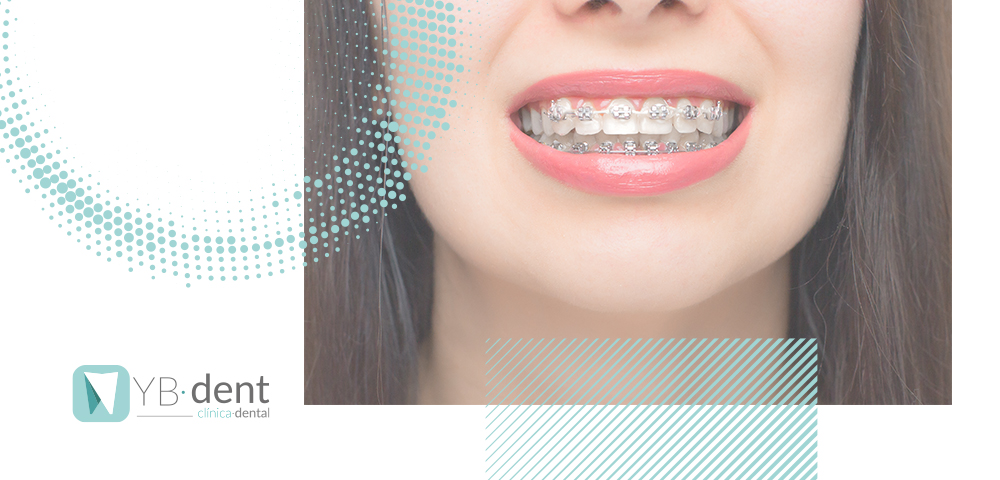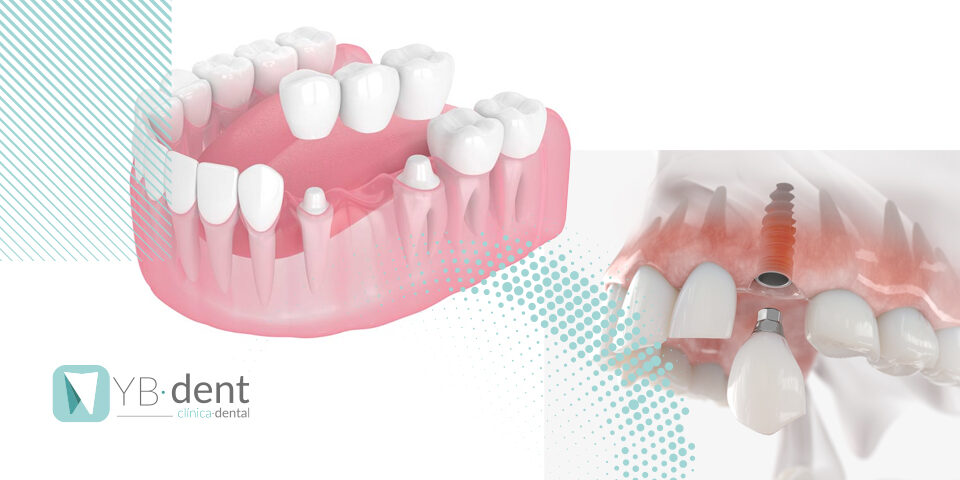¿Cómo funcionan los brackets?

Hay estudios que confirman que 5 de cada 10 españoles llevan o han llevado brackets a lo largo de su vida. Este método para alinear los dientes ya no nos suena a cuento chino cuando hablamos de él y es que si nosotros mismos no lo hemos llevado o lo necesitamos, seguro que nuestro mejor amigo sí.
Pero ¿estamos informados a la hora de saber cuáles son todas las opciones que ofrece, los tipos y la probabilidad de éxito que tienen? Cabe destacar que cada persona es un mundo y existen variaciones, por lo que es recomendable informarse y preguntarle a nuestro dentista sobre nuestro caso en particular.
Hoy en Clínica Dental YB-Dent te hablamos acerca de los aspectos más importantes de los brackets para que puedas hablar con conocimiento de causa y encontrar la mejor opción junto a tu ortodontista.
Tipos de brackets
Por lo general, solemos dividir los brackets en dos grupo: brackets de carácter estético y brackets metálicos. Ahora bien, ambos tienen la misma función y finalidad principal que es corregir nuestra mordida y evitar futuras molestias.
Brackets metálicos
Estos son los más comunes y recurrentes debido a su precio, además, aportan una gran funcionalidad, durabilidad y adhesión. Sin embargo, son los más vistosos y, aunque para los más pequeños no suponga un problema por su combinación de colores, para los adultos suele presentar más rechazo.
Brackets zafiro
Tienen como principal ventaja su durabilidad, funcionalidad y estética ya que son unos brackets muy discretos y se conocen como brackets invisibles. Su desventaja es que cuentan con el precio más elevado de todos.
Brackets cerámicos
Son una opción muy viable y escogida cada vez por más usuarios, su precio no es tan elevado como los brackets de zafiro y conservan una buena estética. Además, se caracterizan por su durabilidad y efectividad.
Brackets de resina, plástico y policarbonato
Aunque son muy económicos y estéticos, con el paso del tiempo se rompen con facilidad y su limpieza disminuye, por lo que son los menos recomendados entre los profesionales.
¿Qué brackets son los mejores?
Decidirse por el tipo de brackets que queremos llevar depende de muchos factores. En YB-Dent te aconsejamos según los objetivos más comunes que se repiten entre nuestros pacientes:
Según su durabilidad
Si lo que más te interesa es que aguanten a largo plazo debes saber que los de plástico o resina no son los más adecuados. Por lo contrario, los de metal, zafiro o cerámica tienen una durabilidad similar, siendo los primeros un poco más resistentes.
Según su estética
Como ya hemos dicho, los más estéticos son los de zafiro puesto que simulan un efecto de transparencia y aunque son perceptibles, pasan más desapercibido que los de metal. Si queremos que no sean muy vistosos pero no estamos dispuestos a hacer un desembolso económico elevado, podemos optar por los de porcelana o los de plástico, aunque lo más seguro es que estos últimos debamos cambiarlo por alguna fractura.
Según el mantenimiento higiénico
Los más sencillos de limpiar son los brackets metálicos puesto que con la limpieza que hacemos diaria de nuestra dentadura es suficiente. Sin embargo, los brackets de cerámica o de zafiro necesitan una limpieza mucho más profunda puesto que también debemos tener en cuenta las fibras que unen los arcos.
Según su carácter económico
Después de leer este post, está claro que los más económicos son los brackets metálicos. Su precio es menor que los de cerámica o zafiro y aunque sea más elevado que los de plástico, no son tan propensos a romperse.
Según su eficacia
Es difícil a simple vista decantarse por unos u otros puesto que casi todos presentan la misma funcionalidad, por lo que para obtener un diagnóstico sobre cuáles se adaptan mejor a nuestros objetivos es conveniente que nuestro ortodontista nos aconseje.
Aunque los brackets metálicos pueden acortar el tratamiento entre 4 y 12 semanas no sucede en todos los casos.



